Kids will love this Halloween science experiment with vinegar and baking soda! This is a perfect science activity for preschool and kindergarten children because it’s safe, but also exciting for them to watch the reaction.
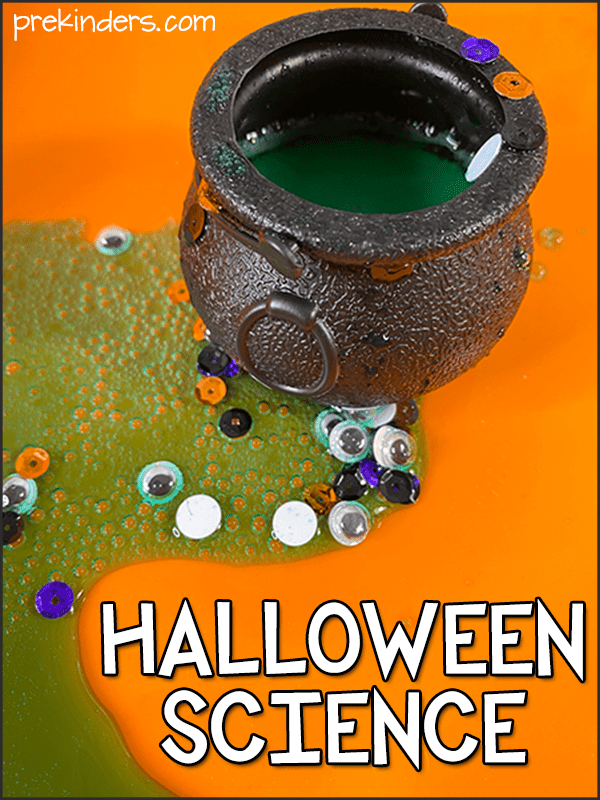
Gather the Halloween Science Experiment Materials:
- Clear plastic punch cups (disposable)
- Water droppers
- Vinegar
- Baking soda
- Food color or liquid watercolor
- Wiggle eyes
- Optional: colored sequins in black, orange, purple
- For version 1: plastic plates (disposable) for each child
- For version 2: “potion” bottles or mini plastic black kettles
Version 1: Halloween Science Experiment on a Plate
Set up the experiment: the Plate Version
For this Halloween science experiment, put wiggle eyes (“monster eyes”) on a plastic plate.
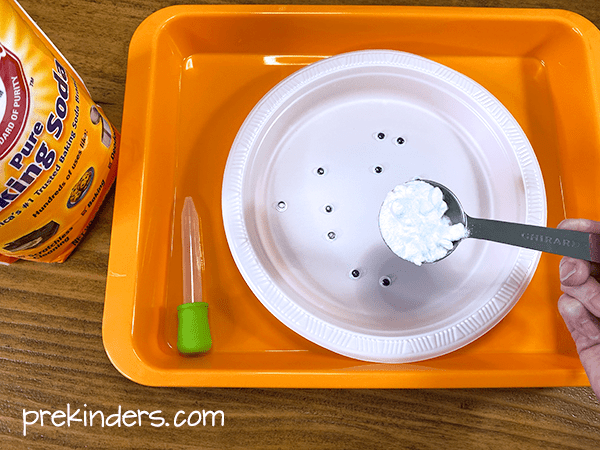
I use disposable plates because they are inexpensive for a whole class, but I wash and reuse them each school year. The plates I used have a high side (from the dollar store).
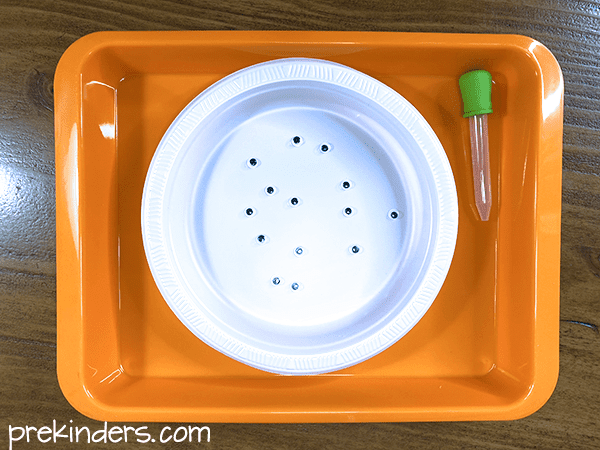
Sprinkle baking soda on the plate, covering the wiggle eyes. Be sure to sprinkle the baking soda lightly over the wiggle eyes. If the eyes are buried under too much baking soda, they won’t “pop” up when the bubbly reaction occurs. You will need one plate of baking soda per child.
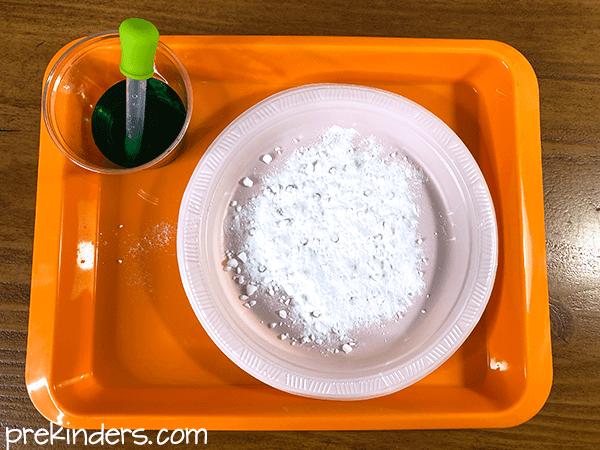
In a cup, add some vinegar and stir in some food color or liquid watercolor paint to color the vinegar. Use Halloween colors, such as green, orange, or purple. Two children can share a cup of vinegar.
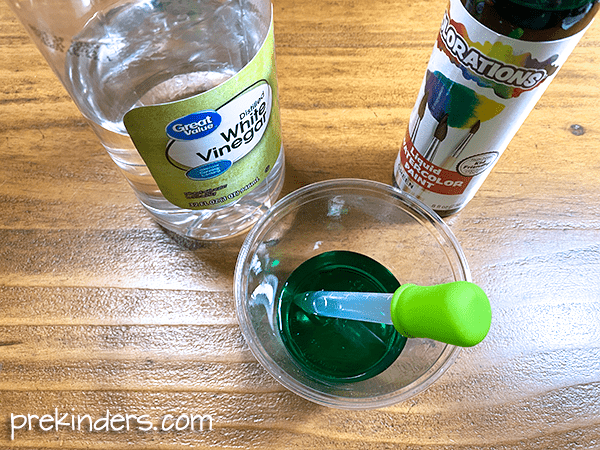
It’s a good idea to have towels or paper towels ready at hand in case of spills.
How to do the experiment: Plate Version
Give each child a plate of baking soda and a dropper. Let them use the dropper to add drops of vinegar to the baking soda on their plate.
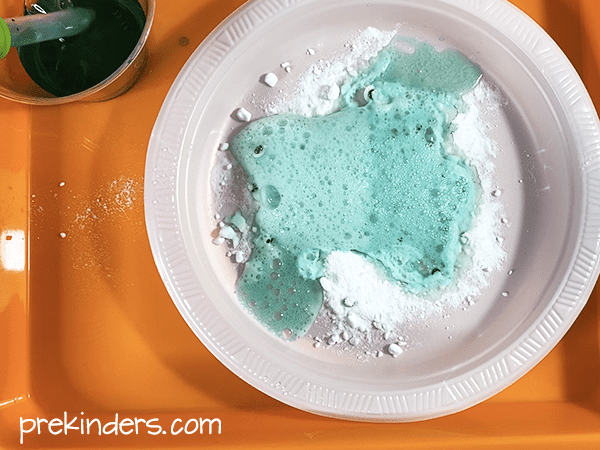
The bubbly reaction will make the eyes pop up from underneath the baking soda. Let the children continue as long as they are able to see a bubble reaction.
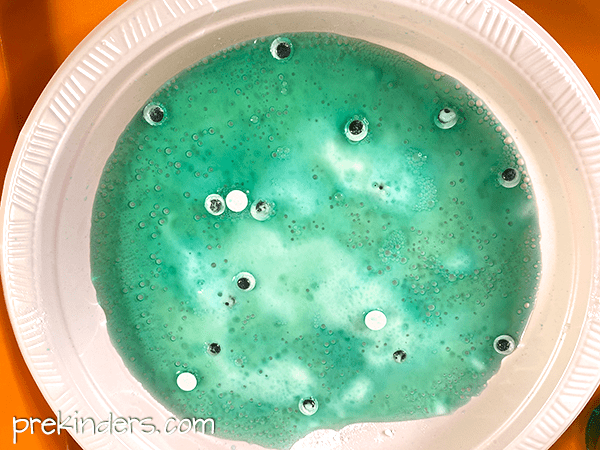
Version 2: Halloween Science Experiment in a Cauldron
Set up the experiment: Potion Version
Scoop baking soda into a mini black plastic kettle (about half way). These kettles can be found in party or craft stores near Halloween. Then, add wiggle eyes and Halloween colored sequins (orange, black, purple) to the kettle, so that the eyes and sequins are on the top of the baking soda.
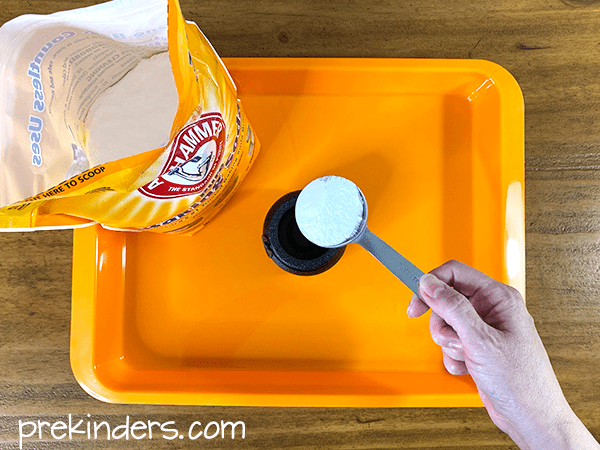
Pour vinegar into disposable cups for each child and add in food color or liquid watercolor in Halloween colors, such as green, orange, or purple.
I highly recommend placing the kettle and vinegar cup in an activity tray to catch the messy liquid when it bubbles over. These are my favorite activity trays from Amazon.
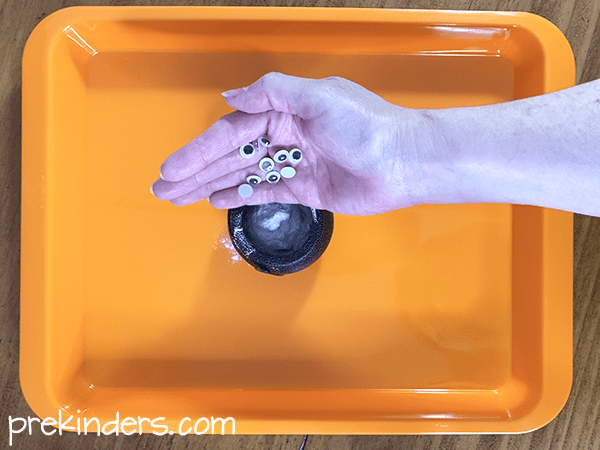
How to do the experiment: Potion Version
For this Halloween science experiment, I recommend giving each child their own cup of vinegar because the experiment has more “explosion” if you pour the vinegar into the kettle. You can provide a dropper for those children who want one.
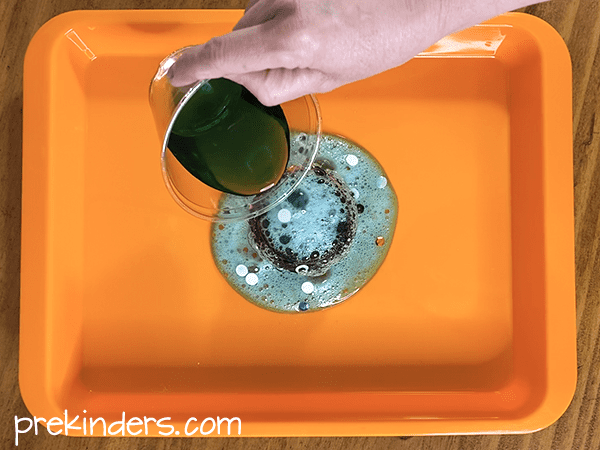
Then just let children enjoy and watch the vinegar and baking soda bubble up out of the kettle! The “monster eyes” and Halloween sequins will bubble right out the kettle! If you pour a little vinegar at a time, it should bubble up 3-4 times.
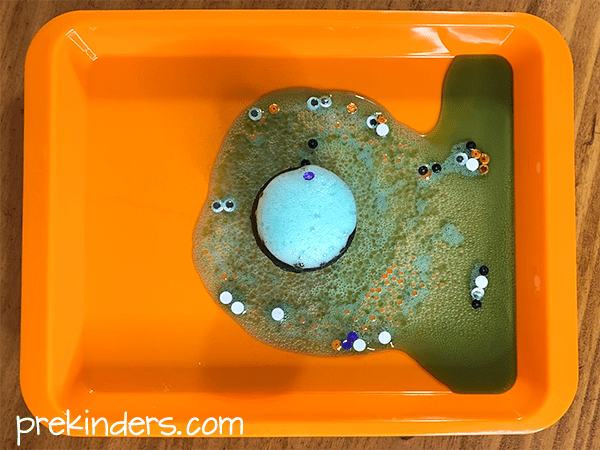
When to do this experiment
Personally, I want all or most of the experiments in my classroom to be hands-on for every child. I want them each to be actively participating, not passively watching me do an experiment for the class, or watching another child.
For this reason, I usually do science experiments at small group and each child has their own materials to do the experiment. Our small groups are typically 4-6 children and rotated throughout the week, so every child in the class would not do the experiment all at the same time, or even on the same day. You can read more about how I manage small groups here. Note that this is separate from center time.
I hope your little learners enjoy this fun Halloween science experiment!
